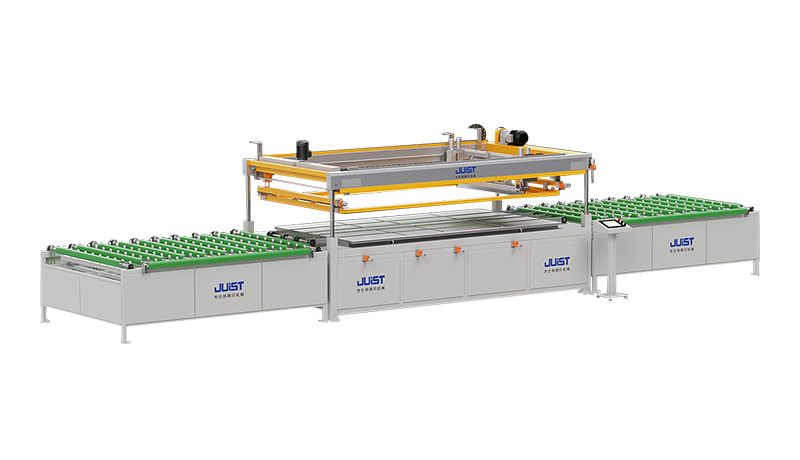+86-519-83387581
In the modern urban jungle, towering glass curtain wall buildings, with their unique crystal-clear beauty, define the contours of cities. However, for a long time, the aesthetic expression of architectural glass has been relatively limited, relying mainly on traditional processes such as screen printing, lamination, or coating. While these methods can achieve basic patterns and color effects, they often fall short in terms of pattern complexity, color richness, and personalized customization. Traditional screen printing requires expensive mesh plates, making small-batch, multi-variety production costly and time-consuming. Lamination or coating processes, though capable of providing some basic decorative effects, also have limitations in detailing patterns.
With technological advancements, a new solution is quietly changing this landscape—digital glass printing technology. This technology is like giving glass a “paintbrush,” allowing architects and designers to unleash their creativity on the transparent canvas of glass with unprecedented freedom. It transforms architectural glass from a mere transparent body into an artistic, personalized building facade.

Beyond Patterns: The Value of Glass Printing Technology
The charm of digital glass printing technology extends far beyond simple pattern display. It is an advanced means of perfectly integrating functionality with aesthetics. By using ceramic inks for printing, these inks fuse with the glass surface after high-temperature sintering, forming a durable colored layer. These layers can not only create any pattern from monochrome to full color but also print visual textures with gradients, translucency, or even three-dimensional effects as needed.
More importantly, these inks themselves are functional. For example, printing specific patterns or dot matrices on the glass surface can effectively control sunlight transmission, reduce indoor glare, and block part of solar radiant heat from entering the room, thereby achieving energy-saving and heat-insulating effects. This seamless integration of functionality and decoration makes architectural glass more than just a medium separating indoor and outdoor spaces; it becomes an important component in enhancing building performance and improving living comfort.
Large Size, High Precision: Challenges and Breakthroughs
In the construction engineering field, glass curtain walls often require giant glass panels several meters or even over ten meters long. This poses a huge challenge for any printing equipment. Traditional digital printing devices are often unable to meet such large-scale printing needs. To address this, specialized architectural glass printing equipment has emerged. These devices feature ultra-long printing platforms and precise motion control systems, ensuring high-precision pattern printing on oversized glass panels.
However, challenges are not limited to size. Printing on glass surfaces requires overcoming ink adhesion issues, ensuring that patterns remain vibrant and intact after exposure to wind, sun, and rain. To this end, manufacturers have developed special ceramic ink formulations and integrated precise temperature control systems into the equipment, ensuring that inks fuse perfectly with glass during sintering, thus endowing printed patterns with excellent durability and weather resistance.
Customization: Giving Buildings More Soul
Modern architectural design increasingly leans toward personalization and customization to highlight a building’s unique character and cultural connotations. The emergence of digital glass printing technology perfectly caters to this trend. Unlike traditional processes that require expensive plate-making fees, digital printing technology can easily realize small-batch, multi-variety production. Designers only need to complete the design draft on a computer and then directly print it onto glass, eliminating tedious plate-making steps, significantly shortening the production cycle, and reducing costs.
Whether complex geometric patterns, abstract artworks, or textures with specific cultural symbols, they can all be perfectly presented on architectural glass. This customization flexibility allows architects to break free from the constraints of traditional processes, turning whimsical ideas into reality, and endowing each building with a unique “soul,” making it a beautiful landscape in the city.
The Future Is Here: How Glass Printing Technology Reshapes the Construction Industry
As environmental awareness grows, green buildings have become the mainstream direction of industry development. Ceramic inks used in digital glass printing usually do not contain harmful volatile organic compounds (VOCs), making it a more environmentally friendly printing solution. In addition, by precisely controlling the density and transparency of printed patterns, printed glass can effectively manage solar energy, helping buildings reduce reliance on air conditioning and lighting, and further lowering energy consumption.
Looking ahead, the application potential of glass printing technology is far greater. We can foresee that this technology will deeply integrate with cutting-edge technologies such as smart buildings and the Internet of Things. For example, printing special conductive inks on glass to turn it into smart windows that display information; or printing photovoltaic cell patterns to transform glass curtain walls into energy-generating exteriors. It is certain that this technology is reshaping the design, construction, and operation modes of buildings in an unprecedented way, creating a more beautiful, intelligent, and sustainable urban environment for us.








